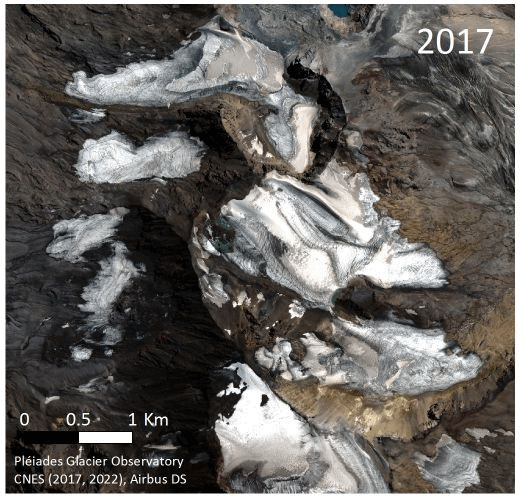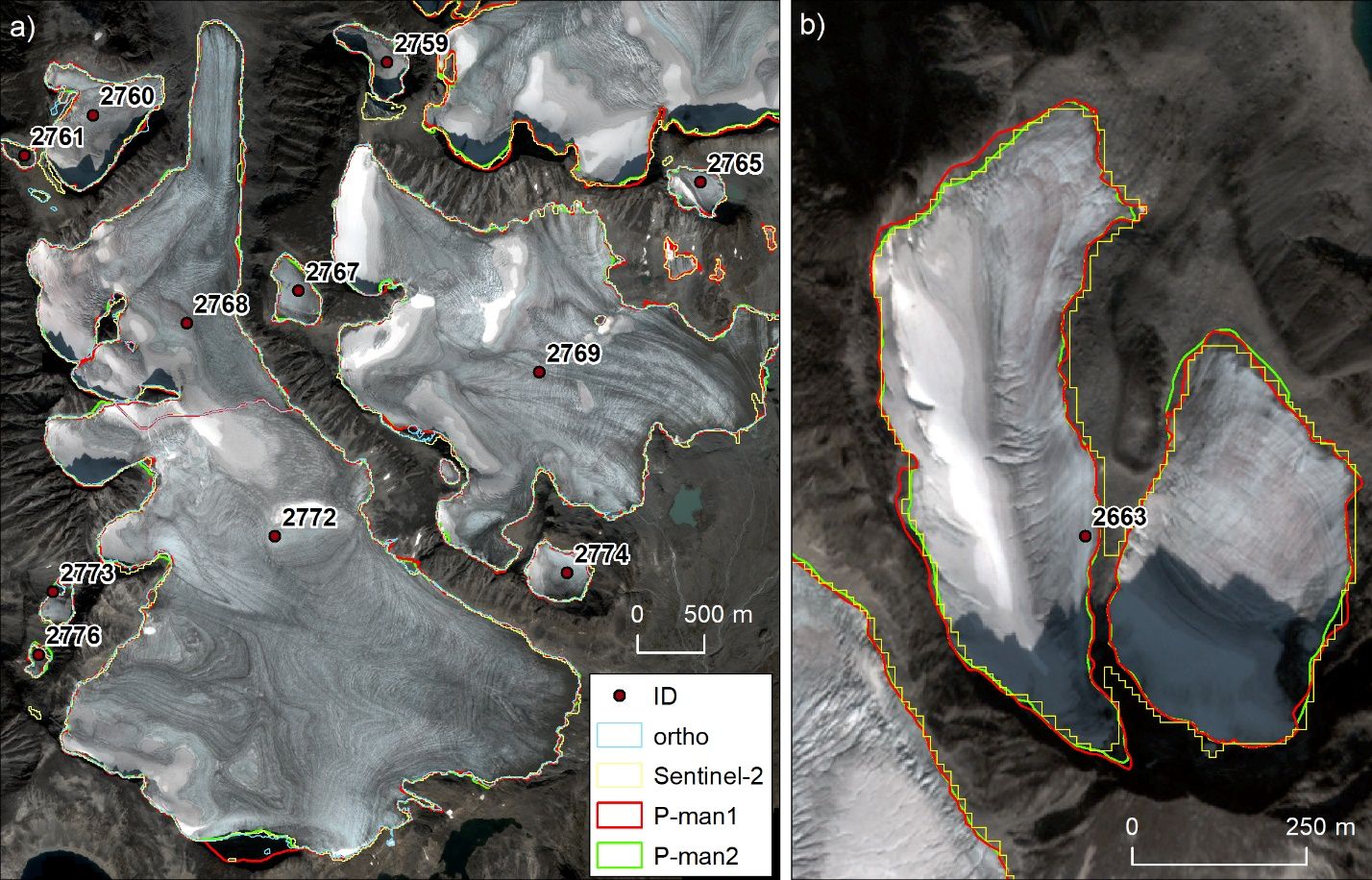Repeat Pléiades images over the Andes
Since 2021, the PGO has entered a « revisit » mode. In other words, the Pleiades satellites photograph the same glaciers 5 years later to study their change in extent and volume. Thus, in February and March 2022, Pleiades acquired stereo images of about 15 glaciated sites in the Southern Hemisphere that had already been observed in February and March 2017.
Among these targets, the glaciers of the Peteroa volcano area are seen on the attached animation. The retreat is edifying, perfectly palpable in only 5 years. The poor health of these glaciers is also evidenced by the small proportion of their surface that is covered by snow: indeed, the ice outcrops almost everywhere. The next step will be to estimate the volume change of these glaciers.




